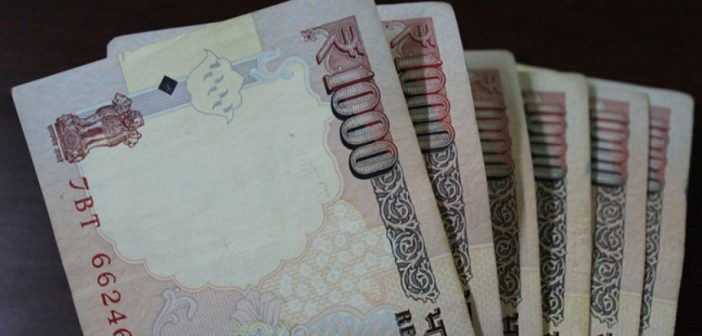A few days ago, the Reserve Bank of India (RBI) announced that more than 99 percent of the money that had been demonetised by the Narendra Modi government in late 2016 is back in the system.
Then, this morning, the media came out with another story: the number of Income Tax returns filed till the end of August 30, 2018, i.e. one day short of the last date of filing, had crossed the 50-million mark – a jump of 60 percent. This means many more Indians are now declaring their incomes out of fear of official retribution in the form of penalties and harsher punishment if they don’t. This also signals that more of the shadow economy, called “black” in India, is coming overground.
I think this is excellent news for every investor, especially those living outside India who form the core readership of India Inc. I’ll return to this in just a bit.
Expectedly, though, the Opposition Congress party led by its President, Rahul Gandhi, and many media analysts and experts were quick to latch on to the first report and scream: I told you so. In their opinion, this figure alone proves that the move, which admittedly disrupted the economy, was not just a failure but “disastrous”.
Gandhi, in particular, was scathing in his criticism. Calling demonetisation a “scam”, he claimed that the entire exercise was undertaken by Modi to take money out of the pockets of the common man and hand it over to what he termed his “cronies”.
This is, in my opinion, bizarre. Those of you who follow Indian politics will know that Gandhi is given to hyperbole and grandstanding even when his positions are not backed by facts. But this assertion takes the cake.
To judge the efficacy of one of the most momentous and very necessary structural reforms in the Indian economy cannot and should not be judged on this criteria.
As I have written in the past, extensive research done by my team of media reports published on demonetisation has not been able to unearth a single instance of the Prime Minister, Finance Minister Arun Jaitley or any senior government official saying the goal of demonetisation was the return of black money.
It was just one more major strike against the shadow economy, which has often put the Indian economy under great strain by increasing the compliance burden and costs, encouraging corruption and driving away foreign investments.
Experts say that many of those filing returns for the first time this year have done so out of fear – as demonetisation and the launch of the Goods and Service Tax (GST) have significantly shrunk the space that was earlier occupied by the black economy.
I think it is often overlooked that not every foreign investor in India is an Amazon or a Walmart, with a multi-billion-dollar investment cheque. In fact, it is evident that a vast majority of foreign investors in India are medium-sized companies in the US, the UK, Europe, Japan, South Korea and elsewhere. They have come to India or propose to do so in the footsteps of the big boys that have set up shop in the country.
In other words, they are part of the global supply chain, the small and medium cogs that keep the wheels of commerce moving all over the world. Unfortunately, not enough of them have come to India either as subsidiaries of their foreign parents or as alliance partners of Indian companies. One of the major reasons why this is so is because many small and medium Indian companies follow practices that are non-compliant with international norms.
It is common knowledge that many businesses in India under-invoice and over-invoice sales and purchases to generate unaccounted money, both for profit and to pay off corrupt officials.
Over time, this has assumed gargantuan proportions, with some estimates putting the size of the shadow economy at 25-30 percent of the formal one. Consider the numbers: India has an official GDP of $2.5 trillion… Add 25-30 percent to this figure and the total will jump more than $3 trillion.
Demonetisation was one more attempt, and a very successful one at that, at achieving this goal.
It is largely because of better compliance – as a result of moves such as demonetisation – that both direct and indirect tax collections have increased.
Now that we know more companies and individuals are declaring sales, profits and income figures that are closer (sigh) to the real picture, it will become much easier for mid-sized and small foreign investors who don’t want to make a full-fledged entry into India to judge the credentials of potential partners and also be certain that the returns they are getting in terms of royalties, share of profits and other fees reflect the reality on the ground.
It will also considerably improve the ease of doing business in India by significantly reducing compliance costs and increasing comfort of investors that what they see is what they get.
I hasten to add here that many Indian businesses, including those in the SME sector, follow high standards of integrity and compliance but it is also true that some rotten apples end up giving the entire basket a bad name.
Modi was among the first Indian politicians to realise the value of becoming part of the global supply chain and encouraged this during his tenure as Chief Minister of the western Indian state of Gujarat. Now, his big and, I dare say, his most criticised but very necessary structural reform promises to deliver that for companies across the country.
On the ground, India isn’t yet fully integrated into the global supply chain the way China, some ASEAN countries and the West are. But it has to in order to increase the share of industry in India to 25 percent of GDP and to provide employment to the millions of youngsters who enter the workforce every year.
This goal remains a work in progress. India has covered a lot of ground since it began opening up its economy in 1991. The pace has increased over the last four years under Modi but the government and Indian industry still have many hard yards ahead.
Forcing the shadow economy to come above ground is merely the first step towards that goal.







